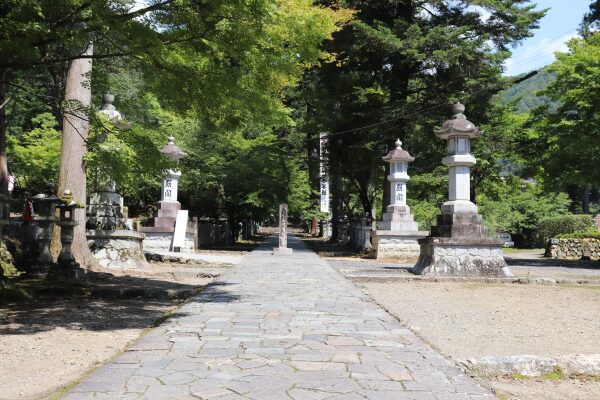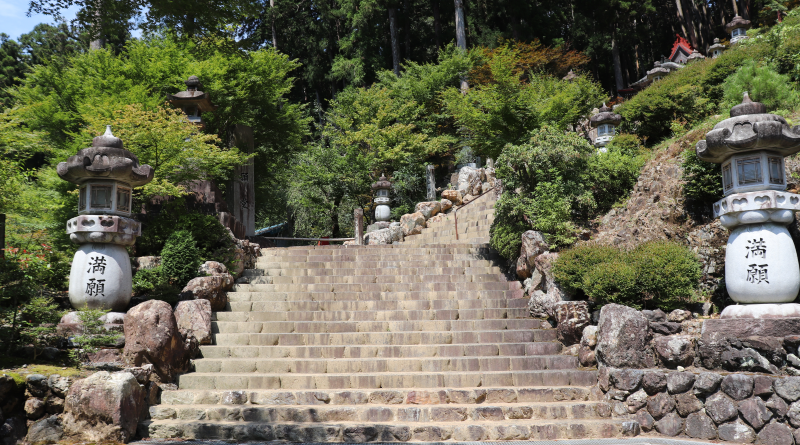Kegon-ji Temple: the Last Temple of Saigoku Kannon Pirglimage
The oldest pilgrimage in Japan is the Saigoku Kannon Pilgrimage, which involves visiting 33 temples throughout the Kansai region. Most of the temples are located in the Kansai region— except one temple, Kegon-ji Temple, which is located in Gifu prefecture. Kegon-ji is the 33rd stop on the Saigoku Kannon Pilgrimage and for many people, this is the final temple on their pilgrimage journey.
Kegon-ji
Despite the slightly challenging access, Kegon-ji is a famous tourist site in Gifu prefecture, and we found many people on the temple grounds when we arrived. The temple is located in the mountainside of Gifu, and its name, “Tanikumi-san Kegon-ji,” comes from the legend that says the oil never stops flowing from the ravine.

The road to the temple, known as Sando, is lined with many sakura trees. I can only imagine how beautiful it must be here in the spring! It’s about a 15-minute walk down the street to reach the temple and be sure to buy uiro here– a popular souvenir from Kegon-ji Temple.

Along the road to the temple are numerous restaurants and stores selling goods for the Saigoku Kannon Pilgrimage. Given that this is the 33rd temple of the Saigoku Pilgrimage, I assume people buy those goods for their second pilgrimage. All these goods and temple stamps bring back memories of our trip throughout the Kansai region.
The Final Temple: Kegon-ji
According to legend, Oguchi Dairyo from the Tohoku region went to Kyoto to create a statue of Jyuichimen Kannon. However, on his journey back to Tohoku, the statue unexpectedly became so heavy that he could no longer move it. With the assistance of a local monk named Bunen, Dairyo built a hut to enshrine the Kannon statue in 798.



Hondo
After climbing up the long stairs, you’ll find Hondo, which was rebuilt in 1879. Kegon-ji houses a statue of Jyuichimen Kannon, but it is rarely open for public viewing. The temple is so strict about showing the statue that you probably can’t even find a picture of it. The statue was last on display in 2009, and before that, the only prior public viewing was in 1955!


The shuin (temple stamp) at Kegon-ji Temple is unique, featuring three distinct stamps from different areas of the temple. The first stamp is from the Hondo and represents your current life, the second stamp is from Mangan-do, representing the past, and the third stamp is from Oizuru-do symbolizes your future.
Oizuru-do and Mangan-do
Behind Hondo is Oizuru-do, where pilgrims donate their robes and hats for the Saigoku Kannon Pilgrimage. Rumor has it that Emperor Kazan, the founder of the Saigoku Kannon Pilgrimage, also donated his robes and canes here.

On the top of the temple is Mangan-do. This is for those who happily finish the Saigoku Pilgrimage. It is hard to believe but we did it! We visited all Saigoku Kannon Temples!!

And so at last, our journey of Saigoku Kannon Pilgrimage is completed!
Information: Kegon-ji Temple
| Address |
Tanikumi Tokuzumi 23, Ibigawa Town, Gifu Prefecture
|
| Website |
|
| Getting To |
To reach Kegon-ji, you have to go to Ogaki Station, which is near Gifu. It is roughly two hours from Osaka station via the Tokaido Line At Ogaki you can either: 2) The other way is to take Tarumi Line from Ogaki and get off at Tanikumioguchi. From Tanikumiguchi, take a bus to Kegon-ji. The former option is a bit cheaper, but in any case, make sure to check the schedule before you head out! |
| Hours |
8:00-16:15 |
| Admission |
Free |
| Note |
|

Leave a Reply